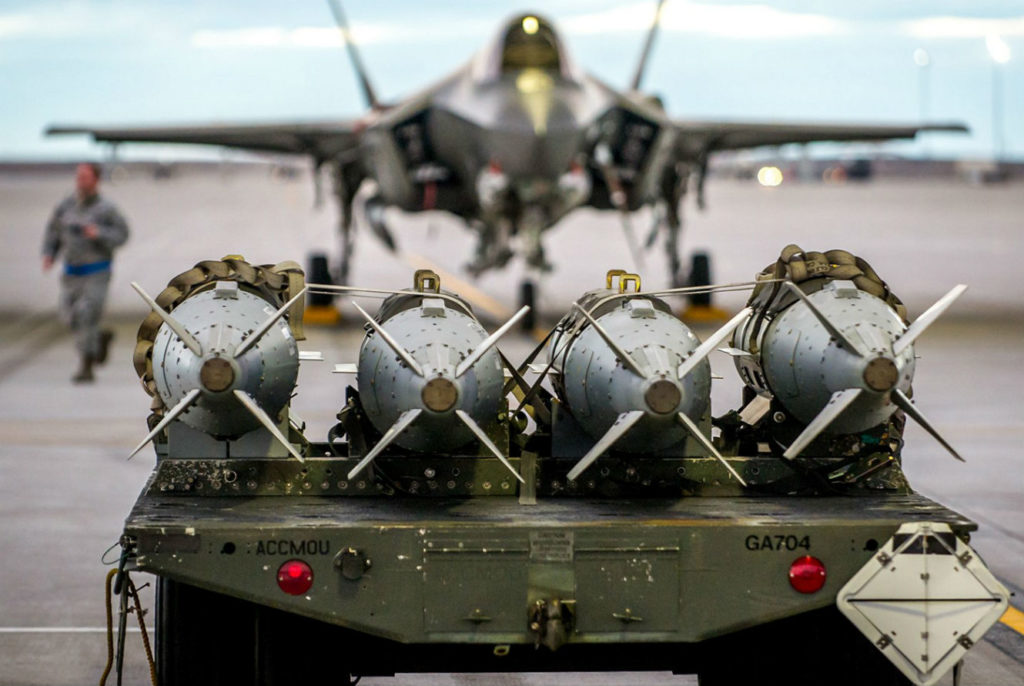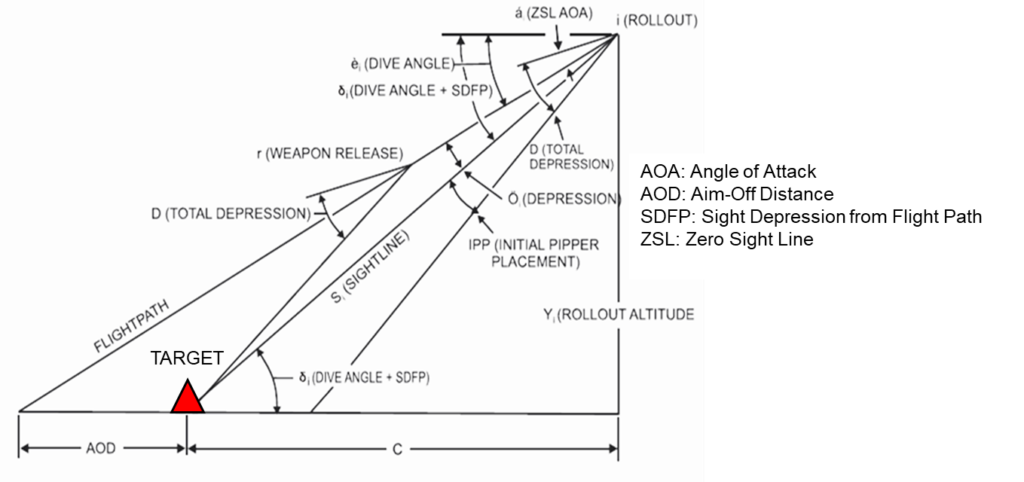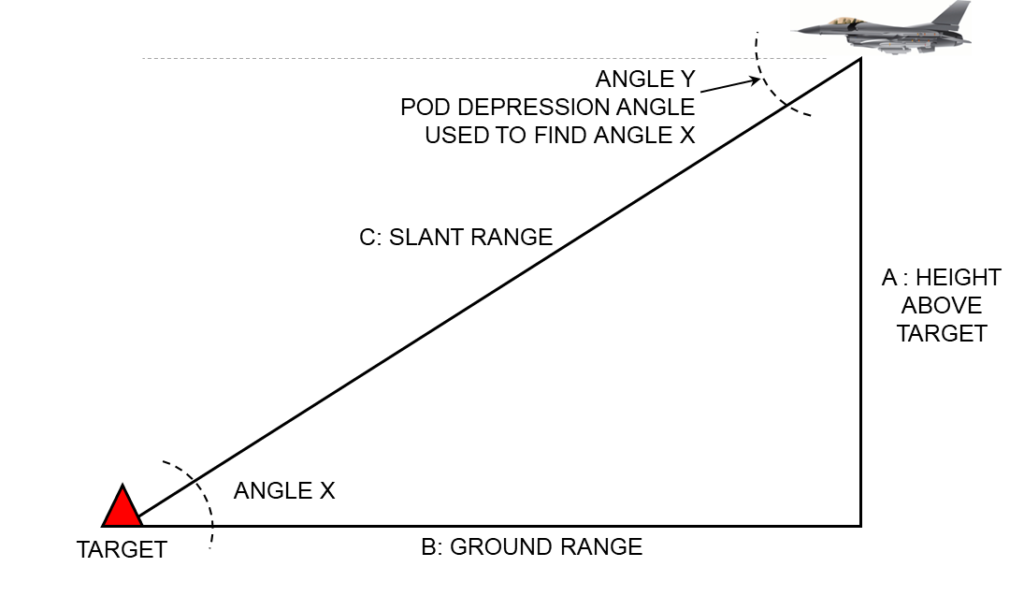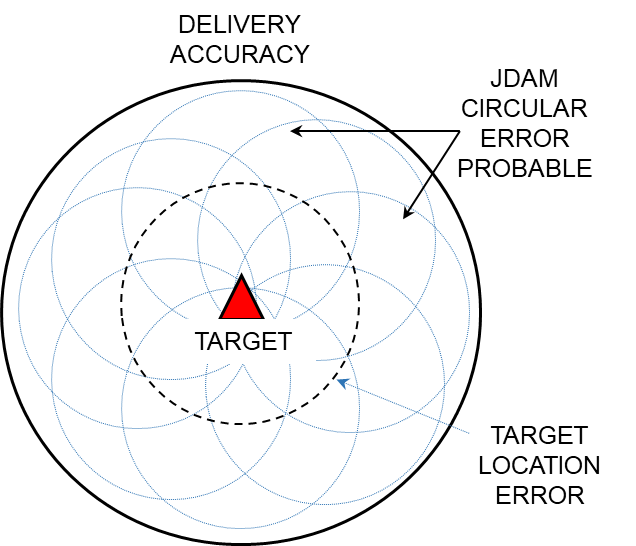Taking Airpower for Granted: A Smart Bomb Story

I recently heard about a one-star general from a support career field who remarked, “In this day and age, thanks to smart bombs, putting a bomb on target is easy now.” Remarks like this are becoming more common, and they stem largely from an illusion that as technology makes warfighting more effective and efficient, it must also make it easier and require less expertise.
In fact, dropping a smart bomb is a bit more complicated than strapping an iPhone to an explosive, using the Maps app to plug in the bad guy’s address, and tapping the Easy button to generate airpower.
Like many things in life, you don’t get something for nothing. For new technology to achieve its claims, the operator’s mastery of one set of skills must generally be supplanted by another equally demanding set.
Highly efficient airstrikes in the Middle East have become so common they’ve regressed from newsworthy to noteworthy, and now to background noise. Unfortunately, this misleads people about the level of complexity and expertise involved. U.S. technological prowess is impressive, and the professionals operating these technologies make it look easy, but even in this day and age, dropping a bomb requires a host of learned technical skills and the ability to exercise sharp foresight under pressure.
Seeing this taken for granted by people on the outside is frustrating. But when airmen start taking airpower for granted, it’s dangerous. This flawed mentality has the potential to warp our understanding of how airmen wield airpower by de-emphasizing the time and resources it takes to maintain the level of expertise that the service — and nation — demand. The worrisome dynamic manifests itself in the cutting of resources and the growth of other ancillary requirements and frivolous tasks that all stake claims for priority.
Fortunately, with every challenge comes opportunity. Let’s remove the mystery about how operators actually put bombs on targets to provide a better understanding how this element of airpower comes to be.
The Old Way
Back in the early days of bombing, before fighters had computers, dropping a bomb accurately required skill, training, and a bit of luck. Pilots had to use trigonometry to create a “bombing triangle” for every delivery. A typical Vietnam-era F-4 attack was a 45-degree dive at 4,500 feet above the target, while flying at 450 knots. The pilot had to navigate mainly using visual references on the ground and canopy angular references to be exactly 6,400 feet away from the target at release.
The pilot also had to account for how the ballistics of the bomb would change its trajectory (after release, the bomb rapidly slows down, causing it to fall short of the aircraft flight path). He accounted for this by aiming long of the target and computing a depression angle (expressed in milliradians). This was known as the sight depression from flight path and was dialed in before each pass.
The pilot also needed good reflexes. Traveling at 450 knots and aiming for the 50-yard line on an NFL football field, he had to hit the pickle, or release, button within 0.2 seconds of the planned release point to ensure the bomb hit between the two end zones.
Even with perfect reflexes, small variations in attack parameters had drastic consequences. Being just one degree shallow could result in the bomb hitting 60 feet short of the target. To score a direct hit (called a “shack”), the pilot had to aim at the right target, correctly calculate the attack parameters, hit the pickle button exactly on time, and calculate the correct sight depression.
In Vietnam, fighter pilots often released their bombs from higher altitudes to avoid an additional issue: anti-aircraft fire. This increased what is referred to as the circular error probable — a circle around a desired impact point whose radius represents the statistical distribution of the bombs that will hit within the circle. This was overcome by simply dropping multiple bombs on each pass (to increase the chance of getting a bomb or two on target). As a result, aircraft were typically assigned on a formation-per-target basis (and occasionally a jet-per-target basis). For example, to hit a half-dozen targets, aircraft packages were generally built around 16 strike aircraft (escorted by other fighters performing escort and suppression of enemy air defenses).

In this age, bombing accuracy was literally in the hands of the individual fighter pilot and there was no substitute for practice, repetition, and experience. During this time, the Air Force budgeted for every fighter pilot to fly 20 hours per month — roughly double the hours they get today.
According to the general I quoted earlier, this is the hard way. As a side note, these fighter pilots also walked to the jets barefoot — uphill, both ways.
Smart Jets, Dumb Bombs
In the 1980s, fighters started incorporating computers that did some of the calculations. A pilot’s flight computer could now compute the trigonometry to present a continuous calculated impact point. The jet factored in winds and displayed a calculated impact point symbol that moved along the ground — hit the pickle button to release the bomb and it will land at the location highlighted by a symbol on the screen. As in previous deliveries, precision flying and superb reflexes still mattered a great deal. Mission planning remained essential to enable the pilot to fly the jet close enough to a release solution so the computer could compute a release, but not hit the ground or fly through the bomb’s explosion.
Operation Desert Storm in 1991 often invokes images of stealth aircraft and laser-guided munitions. However, only 8 percent of all bombs dropped during that war were guided. Most of the remaining unguided bombs were employed by fighters using the jet-computed delivery procedure described above.
The new method enabled strike sorties on a jet-per-target basis rather than sending an entire formation (and sometimes a jet was assigned a handful of targets to strike). This success was largely due to extensive training and resources — the Air Force budgeted 19 flying hours per month for fighter pilots in the years leading up to Desert Storm.
The Smart(er) Way
Now let’s look at a staple of the modern fighter pilot: the GPS-aided Joint Direct Attack Munition, or JDAM (pronounced jay-damn). Commonly called a smart bomb, the JDAM is a coordinate-seeking weapon aided by GPS, not guided. Guidance comes in the form of an inertial navigation unit that resides in the tail of the bomb.
Instead of relying on the jet to compute a ballistic release point, JDAMs use a “launch acceptable region” generally a few miles deep and several thousand feet tall, and that has an airspeed window. This negates almost all of the burdensome needs to be on exact parameters and have good reflexes — but it doesn’t necessarily mean dropping a bomb is any easier. It just means a different sort of expertise is required.
Let’s assume the pilot is airborne and told to strike a particular target. To generate coordinates for the bomb, the pilot must ensure that he has the target in sight using a coordinate-generating sensor and that the internal navigation unit is within acceptable alignment criteria. Calculations similar to the old-school bombing triangle are required, but they must be much more precise. Firing the jet’s laser at the target provides the slant range (side C) and angle Y, while the jet’s computer provides a system altitude (side A) and uses trigonometry to complete the rest of the triangle — specifically, angle X and side B (see Figure 2). This side is the exact ground range from the jet to the target.
At this point you may be wondering why a fighter pilot needs to know all of this if the jet computer is doing the work. Good question.

First, knowing which navigation source the jet computer is using for its trigonometry is critical. For example, the F-15E has five navigation systems — and only one uses GPS. Four of these systems can be used to build a bombing triangle, and the jet also uses two different methods to determine system altitude. Each of these systems has unique benefits and drawbacks, and operators must master all of them to put weapons on target under a myriad of circumstances because each foot of coordinate fidelity matters.
For a bomb hitting the target with a 65-degree impact angle, trigonometry shows that every foot of aircraft system altitude error injects one foot of coordinate error. So a 15-foot altitude error means the JDAM will hit 15 feet off its intended aim point — about the distance between two buildings in a city.
Then there is something called target location error. Even if the jet’s computers do the targeting correctly and the laser operations are flawless, the bomb may still not hit the exact point it was intended to. The reasons are highly technical and beyond the scope of operators, but they are always cognizant of this variable. To minimize this error, operators memorize altitude and range rules of thumb so they know when they can be reasonably assured of generating a high-fidelity set of coordinates.

To keep the coordinates and the ground range accurate, GPS synchronizes the jet computer, the smart bomb, and the targeting pod — and pilots must continually monitor to make sure this synchronization is working. When GPS is interrupted or inoperable, the operator needs to ensure the navigation source of the jet (recall the F-15E has four), the internal navigation unit of the sensor, and the internal navigation unit of the weapon are all within acceptable limits and employ a different set of procedures to minimize the drift between them. While reflexes, innate flying abilities, and mathematical knowledge may no longer be required, these are supplanted by the need to master numerous systems, both federated and integrated, and to employ them deftly and quickly.
But it doesn’t end there. Pilots have another new realm of expertise to learn: airborne weaponeering. For the smart bomb to work correctly, aircrew must program the impact angle, weapon approach angle, impact velocity, and fuse delay into each bomb before it’s released. If the bomb is too fast, the bomb case fractures (and the bomb duds); too slow, and it doesn’t penetrate the target enough before it detonates. The same goes for the fuse delay — a few milliseconds too much and it risks burying the bomb before it detonates, but set no fuse delay and it risks more collateral damage.
With everything above done correctly — not to mention flying the jet within acceptable airspeed, altitude, and range parameters — when the pickle button is pressed, the JDAM comes off, flies a few miles, and hits the target.
This was an abridged description of a single JDAM attack. It doesn’t delve into non-GPS employment — another set of memorized procedures that are more complicated (and sensitive). This account also skipped the required understanding of laser dispersion, target spill-over, and the effect of atmospheric absorption on target location. Finally, the description only applies to a stationary target (hitting a moving target requires another set of complex procedures that pilots commit to muscle memory).
Shack
John Boyd, the Air Force fighter pilot famous for the OODA loop and beloved by the Marine Corps, constantly preached: “People, ideas, things — in that order.” While the pursuit of technological advantages should not wane, it ought not to be mistaken for a replacement for the human element of warfare.
In this case, technology has raised the bar for performance by requiring an expertise that can be gained and sustained by education, not task repetition focused on individual skills with high levels of atrophy. This enables an inexperienced — but highly trained — wingman to become just as lethal as the most experienced fighter pilot in the squadron.
Still not convinced? Every few months, a fresh fighter squadron rotates into the Middle East to support combat operations. The first JDAM many fighter pilots ever drop in their career is in combat — something that would have been unheard of 25 years ago. Today, Air Force fighter pilots fly for half the time they did 40 years ago, but they are certainly no less busy. Their time on the ground is spent studying and in various types of simulators perfecting procedures and dealing with contingencies in a number of situations. Not only has technology supplanted one set of skills with another, it has also changed the approach to education and training for operations.
Also unheard of is the hit rate. In Desert Storm, the F-117 (flown by highly experienced pilots) was lauded by an unprecedented (and inflated) 80 percent hit rate. Today, every deployed squadron averages at least a 97 percent hit rate. This has created a reality in which perfection is not the goal, but the standard.
In the fog and friction of war, when operators fail to get all of these procedures right it has life-altering consequences. The expectation of both precision and perfection is a testament to the aircrew’s expertise, which is only made possible by investing the time and resources to perform at this level.
Leaders and airmen who stop seeing the need for expertise in the employment of technology not only risk prioritizing programs over people, but also foster a culture of over-reliance on technology — which dulls critical thinking and discounts the skills of the people put in harm’s way.
Statistically speaking, during the time you’ve spent reading this, aircrew will have performed these procedures and dropped at least one JDAM on an ISIS target — and chances are, it was a shack.
Maj. Mike “Pako” Benitez is an F-15E Strike Eagle Weapons Systems Officer with over 250 combat missions spanning multiple deployments in the Air Force and Marine Corps. He is a graduate of the U.S. Air Force Weapons School and a former Defense Advanced Research Agency (DARPA) fellow. The views expressed are those of the author and do not reflect the official policy or position of the Department of Defense or the U.S. government.

